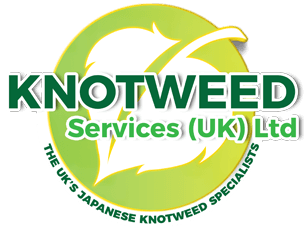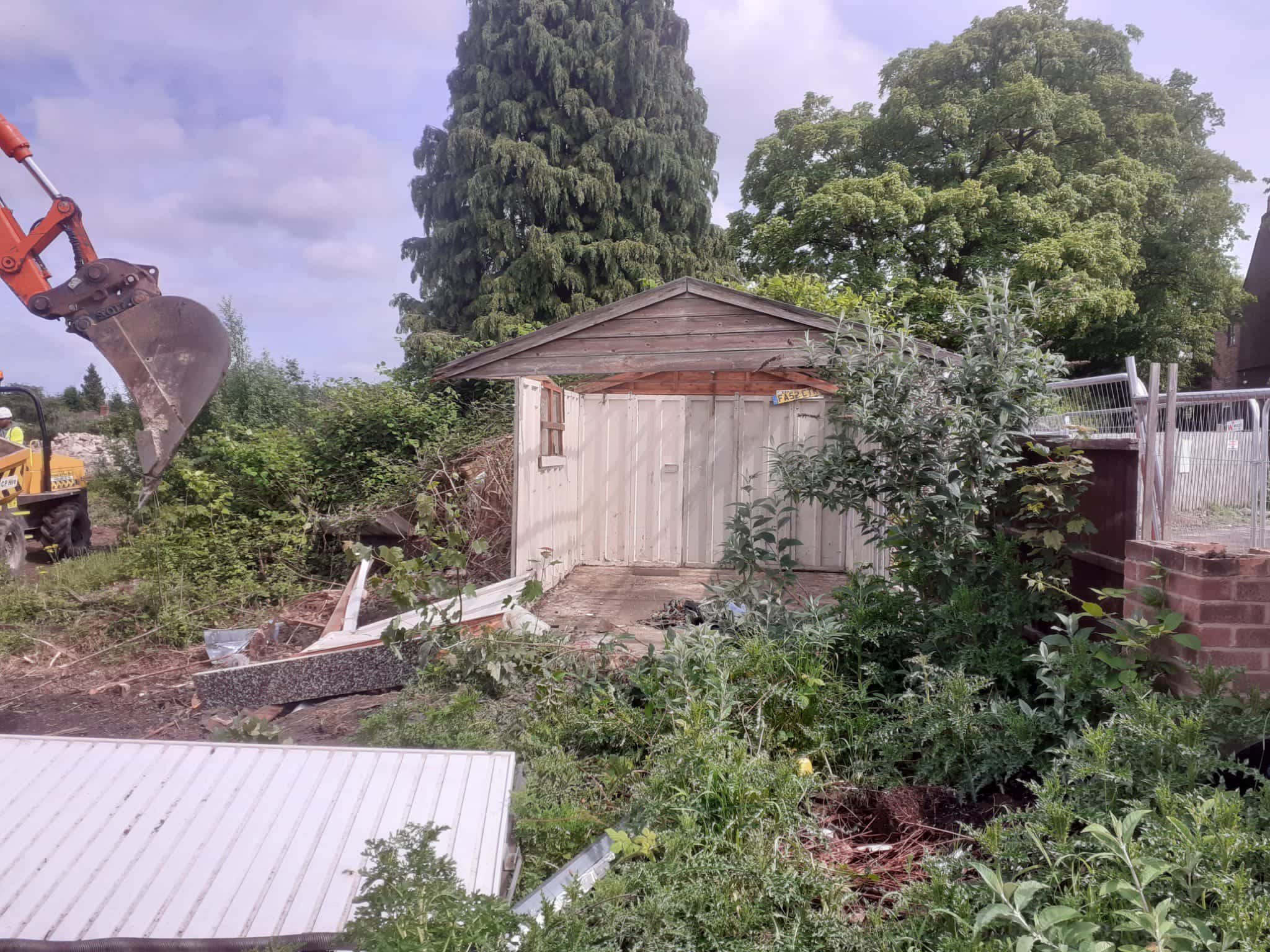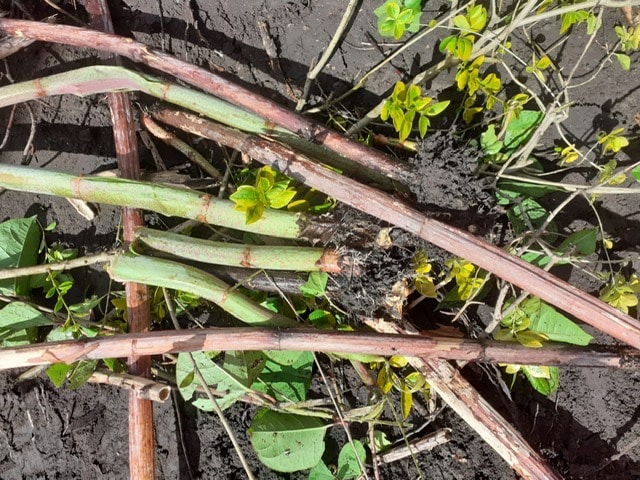Japanese Knotweed Removal Somerset
Japanese knotweed is an invasive species of weed that can quickly take over your property. It spreads by seed, cuttings and underground roots, and it is a serious threat to your home’s foundation, drainage and overall stability.
We are proud to offer Japanese knotweed removal in Somerset through our local technicians who handle all of our projects within the county. Our technicians are fully trained in all aspects of Japanese knotweed removal and will work closely with you to ensure that you get the best possible results when dealing with this invasive species.
If you need help with Japanese knotweed removal in Somerset, please contact us today!
You've heard of Japanese knotweed, but do you know what it is?
- Japanese knotweed is a fast-growing invasive plant that can spread quickly and cause serious damage to buildings and foundations.
- This invasive plant has been in the UK since the 18th century (initially thought to be an ornamental plant), and it’s spread into every corner of our wonderful island causing a Japanese Knotweed Infestation to pop up all over.
- Japanese Knotweed thrives on disturbance and can grow up to 10 cm per day.
- It has the ability to grow on almost any type of soil, so even if you live in a basement apartment where you think it won’t grow, it can still find a way!
- Can affect your ability to both sell and buy property – lending can become troublesome.
- It most certainly isn’t an ornamental plant…
You are not required by law to eradicate Japanese knotweed. However, it is illegal for a landowner or homeowner to allow the plant to spread to neighbouring properties or land.
If you do not use our Japanese knotweed removal services in Somerset, your invasive weed problem may incur legal fees that exceed the cost of treatment.
PROBLEMS CAUSED BY KNOTWEED.
- Buildings may sustain structural harm from this plant species. Asphalt, hollow cavity walls, and concrete are NOT an obstacle for it.
- Banks have a history of refusing to issue mortgages or make loans against afflicted structures or areas where a knotweed infestation is present.
- Obstructs access to and visibility of roads, pathways, and other infrastructure. posing a serious problem, especially for commercial establishments. All of this is fixed by our eco control solutions.
- Invasive plants can quickly multiply and spread, making Japanese Knotweed removal and control very costly. Which is why our Japanese Knotweed removal in Somerset services should be utilised sooner rather than later.
- For a more in depth guide on how to identify Japanese knotweed and your weed problem – please have a look at our page here.
HOW MUCH IS IT GOING TO COST?
Getting rid of Japanese knotweed is difficult. Expert labour is required for removal. If even a tiny fragment of knotweed is left in the ground (or transported on machinery or shoes), it will swiftly spread and form a new plant. In spite of the soil’s poor quality or absence of nutrients. Click here for our dedicated costs page.
Weed killers used at mainstream retail outlets rarely work against Japanese knotweed. The following are necessary steps for the successful eradication of Japanese knotweed in Somerset.
- Professional identification of the Fallopia Japonica plant species. Use the enquiry form on this page
- Japanese Knotweed Site Survey
- Chemical spraying and treatment
- Waste disposal laws that must be followed.
- Insurance backed guarantee issued once knotweed removal is completed
There is no standard procedure for treating or removing Japanese knotweed (or other invasive species such as Himalayan Balsam or Giant Hogweed). Our Japanese knotweed experts in Somerset and our eco control solutions are second to none.
Our Japanese Knotweed Removal teams extend across the whole of the UK. Get rid of Japanese knotweed in Somerset without breaking the bank by hiring our friendly, expert eco control solutions team. We offer a 10 year plus insurance backed guarantee on all of our services. We guarantee that your Japanese knotweed will not return once it has been removed.
We are specialists in Japanese Knotweed removal, and we prevent its spread throughout Somerset and the greater UK.
FREE IDENTIFICATION
Fill in the form below, attach your pictures and we’ll let you know if the plant in your picture is Japanese Knotweed.
NO HOOPLA, JAPANESE KNOTWEED REMOVAL IN SOMERSET
Our expert services and Property Care Association-approved Japanese Knotweed removal services are customised to meet the specific needs and demands of each client.
OUR JAPANESE KNOTWEED REMOVAL EXPERTS WILL GUIDE YOU FROM THE OUTSET.
RESIDENTIAL TREATMENTS.
WHAT YOU NEED TO KNOW ABOUT JAPANESE KNOTWEED IN SOMERSET
The application method, treatment, and control of this invasive species varies according to infestation levels. This invasive plant might require one or more treatments.
To achieve the best outcomes, our Japanese knotweed specialists are trained to take into account all variables. Treatment strategies will be determined by ongoing analyses of infestations particular to a certain site and the influencing factors and variables.
The application procedure and control strategies will be tailored to specific locations in order to maximise performance while minimising waste and environmental effect.
As PCA-approved Japanese Knotweed specialists, we analyse the most recent research to determine the ideal time to treat. You can rely on our eco-friendly solutions.
The latest research from Swansea University, released April 2018 by Dr. Dan Jones & Professor Dan Eastwood found that:
Applying the wrong herbicides at the wrong time of the year, leads to greater herbicide use and environmental impacts. The 4-Stage Model that we have developed links herbicide selection and application with the seasonal surface-rhizome flows in the Knotweed plant. This seasonal targeting of Knotweed delivers better results and uses lower doses of herbicide across the whole treatment life-cycle. For the public and land managers, this means more affordable treatment that is also more environmentally friendly than traditional, blanket herbicide application.
(Dr. Dan Jones – Swansea University).
Following the release of this research, Knotweed Services (UK) Ltd now operate using the 4-stage model which identifies the optimal time for treatment.
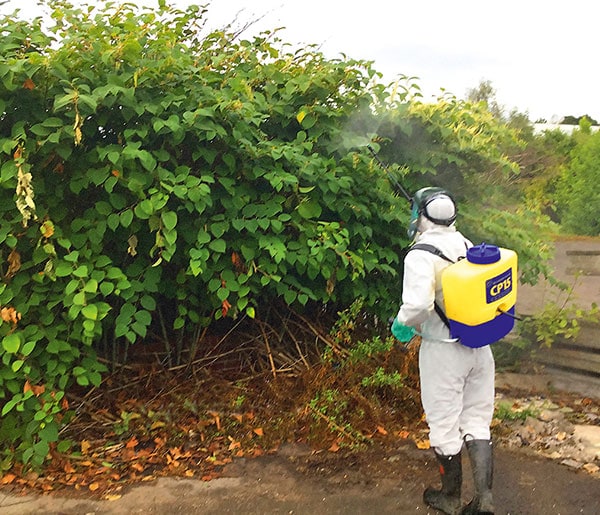
FOLIAR SPRAYING
The most widely applied therapy. making use of a backpack to spray potent toxins. We take care to prevent any harm to other plants. The best time to spray for Japanese knotweed is in the spring.

FOLIAR LEAF WIPING
In this Japanese knotweed treatment, we employ a tool to “physically wipe” our chemicals onto the Japanese knotweed leaves. We typically utilise a greater chemical concentration because this use is so precise.

STEM INJECTION
A precise amount of pesticide is injected just into the invading weed. Due to the fact that it is directly injected into the Japanese Knotweed, this is the most ingenious method of removal. The weather has no impact on it.
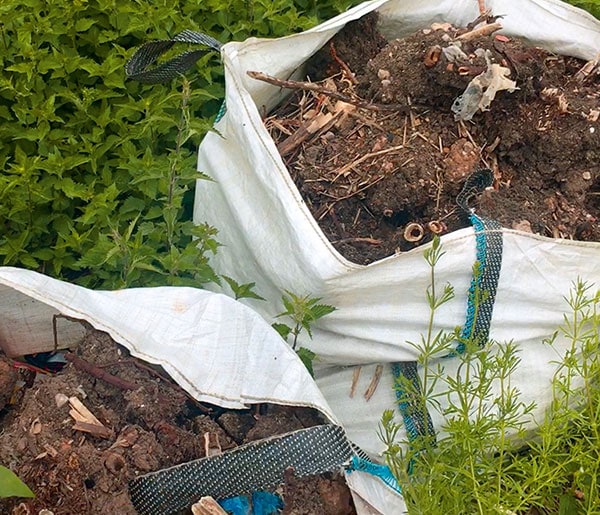
BIOMASS REDUCTION
Biomass is a form of excavation and removal, but rather than extracting all of the Japanese Knotweed-affected soil, we merely remove the infected soil. It is an excellent Japanese Knotweed treatment method that permits soil reuse. Reducing the use of landfills.
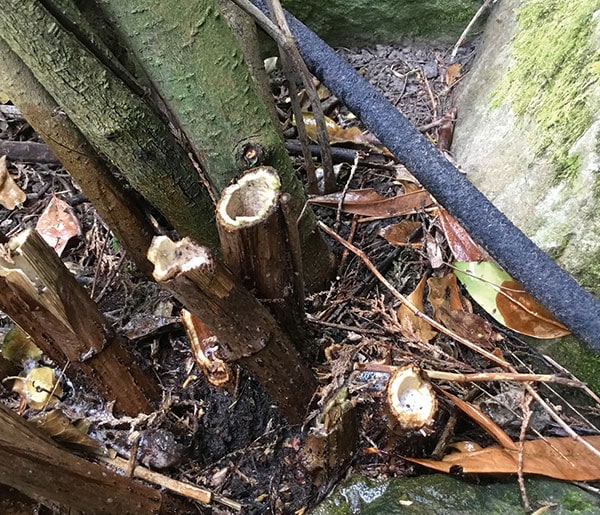
CROWN REMOVAL
Crown and stems can grow back, and even small pieces of cut crown or stem can grow into a new invasive weed. Getting rid of these parts is a great way to get rid of the problem. Removes the Fallopia Japonica’s roots completely.
COMMERCIAL REMOVAL.
A 5-year (herbicide) management plan is not an option if you intend to develop or build on Japanese Knotweed-infested land. This is typically owing to time constraints imposed by planners and construction workers, as well as resource availability and financial schedules.
The Environment Agency further suggests that, in cases of development, the entire rhizome of Japanese Knotweed be removed from the soil for total eradication; this is particularly necessary when the earth is likely to be disturbed during the construction, constructing, and expansion of homes/industrial and commercial units, as well as landscaping of grounds.
Knotweed Services (UK) Ltd offers skilled services and solutions that are customised to the expectations and needs of each client. Our friendly and helpful team is available to answer questions and provide information and support.
We will walk you through the process from the start, identifying the present use of the land, future
development plans, time-scales, schedules and find out if planning applications have been made or approved (if planning has been approved, we’ll ask you for copies to assist in the treatment plan) and give advice on the most cost-effective ways to deal with the problem, based on your project needs.
Images, measurements, and specifics on the site or project will be recorded. For instance, access points for plant equipment, routes for disposal vehicles, potential bund areas, as well as a Risk Assessment of the site and any potential hazards, will be documented. When selecting the most cost-effective and suitable management plan for the site or project, the surveyor will also consider local rivers, neighbouring properties, and site plans.
The results of the site survey, a recommended work plan, and an estimate are then compiled into a report for the client’s consideration.
For all of our projects, Knotweed Services (UK) Ltd will provide both machinery and professional personnel. All of our technicians and operatives are trained and directly employed by our organisation. We will directly regulate and supervise every work, ensuring that all regulations are carefully adhered to and no cross-contamination happens. Alternatively, if you provide your own equipment, we can supervise the project on your behalf.
NO ONE JOB IS EVER THE SAME AS ANOTHER.
In reality most eradication programs are a combination of treatments.
— COMMERCIAL TREATMENT OPTIONS
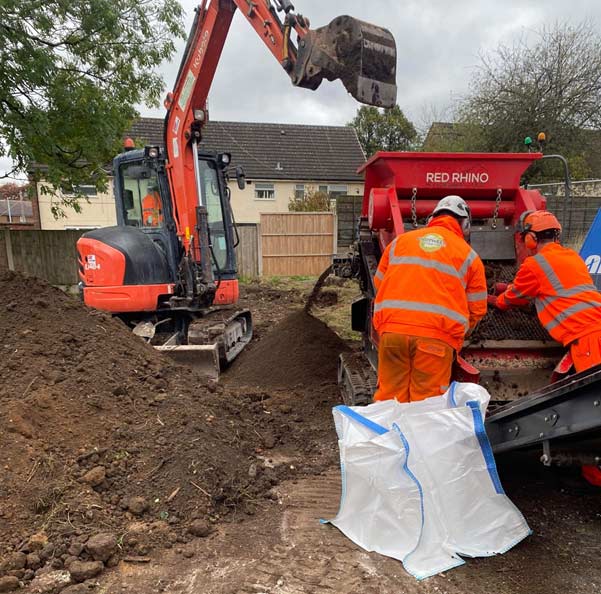
SOIL SCREENING
Methodology utilised on thousands of UK sites.
Japanese knotweed rhizome is separated from soil by screening. The Japanese knotweed is either transported to an authorised landfill at a reduced disposal cost, or it is burned on-site in accordance with an Environment Agency or Natural Resources Wales D6 exemption.
The sanitised soils can be used for soft landscaping.
This can save landfill and backfill costs, as well as a site’s carbon impact, because fewer trips to the landfill will be required.

BIOSECURITY SUPERVISION
Knotweed Services may provide a biosecurity specialist to supervise the excavation of Japanese knotweed.
We can install a boot- and machine-washing station for biosecurity at the entrance of the site.
All contractors will sign a toolbox talk for the site’s principal contractor.
We can install temporary geotextile barriers in places with high biosecurity risks.
After the work is completed, we will send a report on biosecurity.
This method is applicable to on-site treatments.

EXCAVATION AND DISPOSAL
This treatment method is appropriate when time is of the essence and Japanese Knotweed and contaminated soil must be transferred to a permitted landfill.
By promptly eliminating all traces of the infestation, building can commence very quickly. No method of Japanese Knotweed removal or treatment is quicker or more effective at destroying its rhizome system.
A licenced waste hauler transports all off-site rubbish to an authorised landfill, including the root system of invasive plant species!

CELL BURIAL
Moving Knotweed-contaminated soil from one site location to another and burying it in a trench enclosed with a root barrier membrane is cell burial.
Japanese Knotweed burial requirements:
- The Environment Agency proposes a 2-meter-deep burial chamber.
- The grave should be 5 metres deep.
- All root barrier seams are welded together to construct a cell Japanese Knotweed can’t escape. Backfill with clean soil.
- To minimise inadvertent disturbance of the burial site, all site designs should include its position.

STOCKPILE & TREAT
Bundling transfers contaminated Japanese Knotweed soil to a distinct site location. A bund is a zone of polluted soil that is typically 0.5 metres deep.
The bund can be raised or sunk to blend in with its surroundings.
Japanese Knotweed is transported on bunds to vacant land. This enables therapy where it was previously impossible.

HERBICIDE APPLICATION
Knotweed Services may offer customised treatment plans based on the location of Japanese knotweed.
These methods are compatible with treatments that restrict pedestrian access, such as embankments or existing paths.
This covers up to three visits each year for the application of herbicide via foliar spray or stem injection over the course of three years, followed by two years of monitoring.
We would select herbicides based on the surrounding vegetation or environment.
After each visit, a comprehensive treatment record containing photographs of the patient’s progress and an annual report are provided. This remedy is most effective during the growth season.
OUR JAPANESE KNOTWEED SPECIALISTS and SOLUTIONS ARE AVAILABLE THROUGHOUT SOMERSET
- Axbridge
- Bath
- Bridgwater
- Bristol
- Bruton
- Burnham-on-Sea
- Castle Cary
- Chard
- Cheddar
- Clevedon
- Crewkerne
- Dulverton
- Frome
- Glastonbury
- Ilminster
- Keynsham
- Langport
- Long Ashton
- Martock
- Midsomer Norton
- Minehead
- Nailsea
- North Petherton
- Paulton
- Peasedown St John
- Pill/Easton-in-Gordano
- Portishead
- Radstock
- Shepton Mallet
- Somerton
- South Petherton
- Street
- Taunton
- Wedmore
- Wellington
- Wells
- Weston-super-Mare
- Williton
- Wincanton
- Winscombe
- Wiveliscombe
- Yatton
- Yeovil
